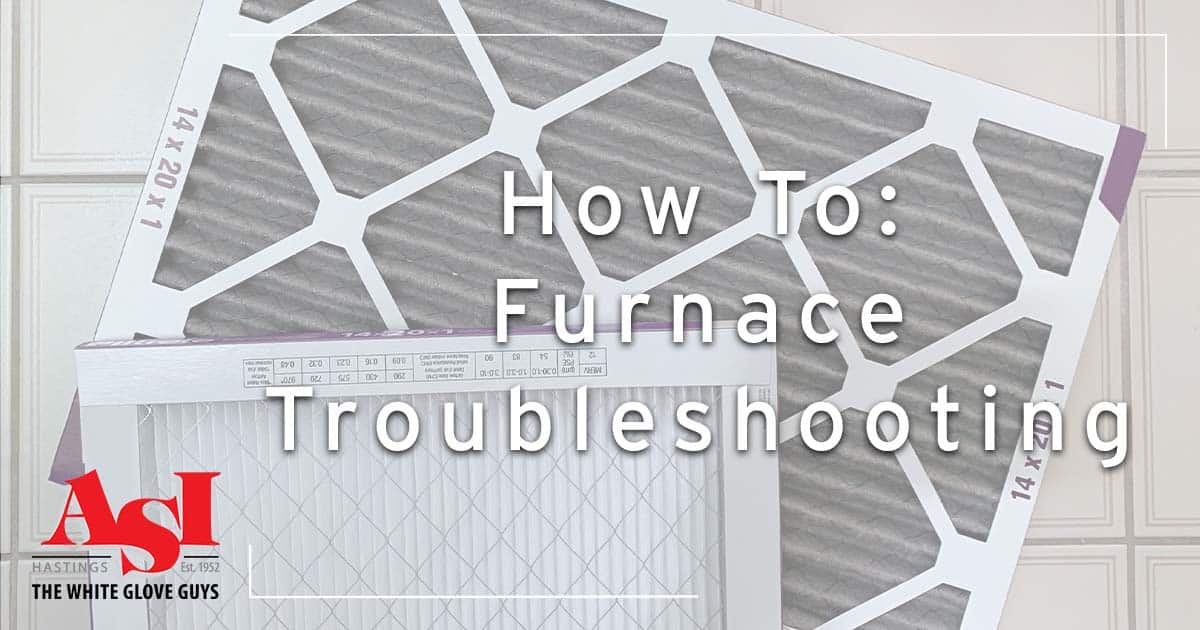Furnace maintenance should be on every homeowner’s to-do list. However, issues can still arise even when your furnace is appropriately maintained.
Here are some of the most common furnace issues we see. Read on to learn how you can troubleshoot these common furnace problems on your own.
The Blower is Always On
If you notice that your blower is running continuously, there are a few things you can do to try and fix the issue.
First, make sure the fan switch on your thermostat is set to “on.” If your thermostat is set to “auto,” the blower will run continuously, even if no warm air is being produced.
Most furnaces have a fan limit switch. This acts as a preventative measure to avoid blowing cold air into your home. If the fan limit switch is operating correctly, it will be closed and only open as the furnace’s preset temperature value is reached.
For those with a multimeter, you can easily test the limit switch. Sometimes the limit switch just needs to be reset, but it may need to be replaced.
There’s Not Enough Heat
When the furnace is on, but no heat is coming, don’t jump straight into panic mode. Start by double-checking your thermostat settings.
The problem may not be your furnace at all. It could be that your thermostat is not set to ‘heat.’ If this is the case, turn your thermostat set to heat. If this didn’t work, the next step should be to replace the batteries in your thermostat to see if that does the trick.
Take a look at your furnace’s power switch. If this power switch is on, locate your home’s breaker panel. If the switch to your furnace is on, toggle it between the ‘on’ and ‘off’ position once. If the power does not return to your furnace, call a professional.
After ensuring that your thermostat is operating properly, it’s time to take a look at your vents. As your furnace produces heat, the temperature treated air travels to your ductwork and out through the vents in your home. Clean the vents every month and make sure they stay open and unblocked.
When you feel some heat, but just not enough, we recommend checking your air filter. A clogged or dirty air filter makes it hard for air to travel from the furnace to your home.
Homeowners should also remember that a furnace filter is ALWAYS required. Allowing your furnace to run without a filter can lead to expensive issues.
Your Furnace is Short Cycling
One of the biggest reasons a furnace starts to short cycle is because the air filter is clogged. We mentioned above how your air filter can decrease heat production. Simply check your air filter and change it if need be.
Another reason your furnace is short cycling could be attributed to your vents. Make sure all your supply and return vents are open and nothing is in their way.
Your Furnace Keeps Turning Off
The best way to troubleshoot a furnace is by… have you guessed it? Checking and replacing the air filter.
It may be time to get up to your attic and install a nice, new air filter. Despite this, there may be a time when a new air filter doesn’t help. In these cases, you could be dealing with a faulty or dirty flame sensor.
A flame sensor is a safety measure in your furnace. All furnaces use natural gas to ignite. The flame sensor makes sure a flame is ignited when gas starts coming into the furnace. At the first sign of a gas leak, the flame sensor will turn the furnace off.
Finally, take a look at your thermostat. If the batteries have been changed, and the thermostat setting is on ‘heat,’ your thermostat may need a replacement.
The Thermostat is Not Working
If you believe that your thermostat is not working correctly, first check to ensure that your furnace switch is on. If your furnace switch is off, the thermostat wasn’t the culprit. Next, change out your thermostat batteries. Even ‘low’ batteries could cause thermostat malfunctions, so switching them out is your safest bet.
After replacing the batteries, reset your thermostat. Turn the device off and back on. Once you have reset your thermostat if it continues to malfunction, call on professional assistance.
Pilot Light is Out
This one is mostly for older furnaces. Modern heaters do not use pilot lights the same way older models do. For those with an older furnace, find the service panel.
You should see a small circular window. Look in the window for a flame. If your pilot light has been blown out, restart it by following these simple steps:
- Turn off your furnace.
- Turn your gas valve to the ‘pilot’ position.
- Hold down the red button next to your gas valve for 60 seconds.
- Carefully let go of the red button.
- Return your gas valve to the ‘on’ position.
- Turn your furnace on.








